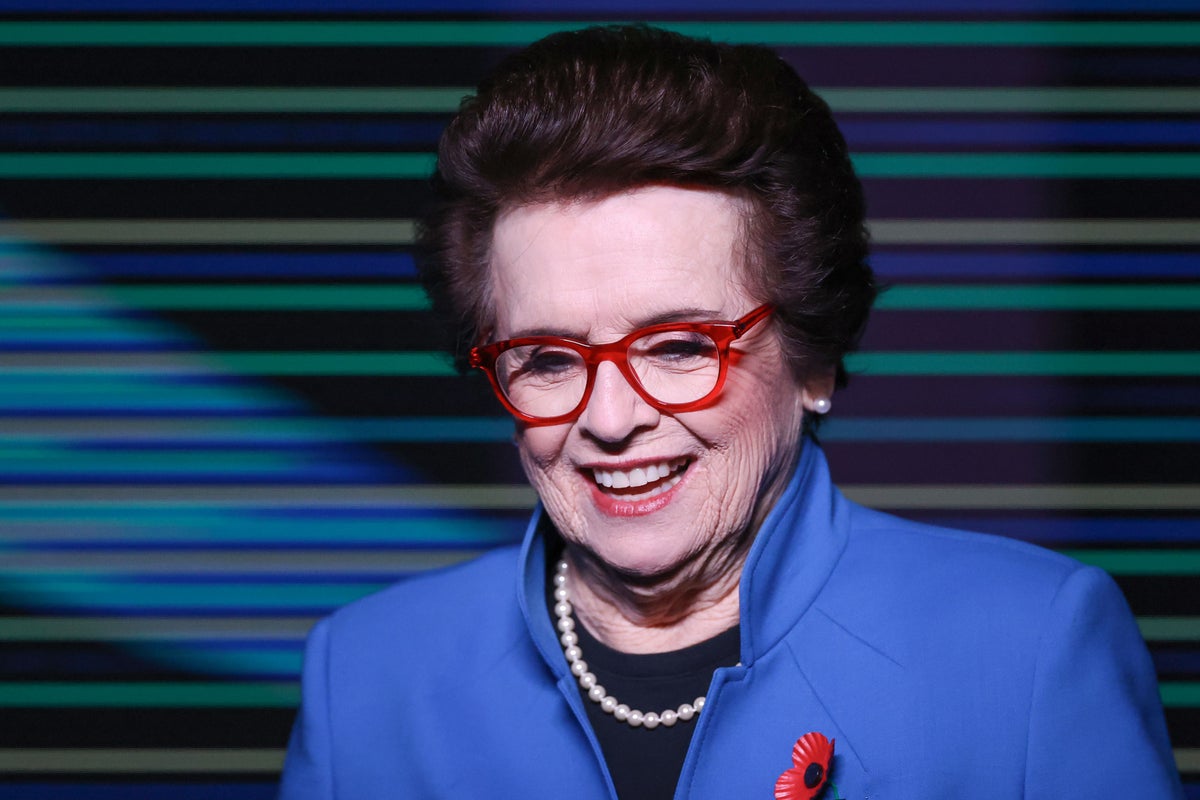
When Aryna Sabalenka lifted the Daphne Akhurst Memorial Cup at the Australian Open in January and collected prize money of more than £1.5million, her first words were for the woman who had handed her the silverware.
“It’s such an inspiration to receive the trophy from you,” Sabalenka told Billie Jean King. “Thank you so much for everything you’ve done for our sport.”
King had watched Sabalenka defeat Elena Rybakina from the front row of Rod Laver Arena along with six of the women who helped her make tennis the most lucrative women’s sport in the world.
June will mark half a century since King gathered more than 60 women together at the Gloucester Hotel in London to form the WTA.
The seeds had been sown three years earlier when, angry at being treated like second-class citizens in tennis’ fledgling professional era, nine women branched out on their own.
King, Rosie Casals, Nancy Richey, Kerry Melville, Peaches Bartkowicz, Kristy Pigeon, Judy Dalton, Valerie Ziegenfuss and Julie Heldman – known as the Original Nine – all signed symbolic one dollar contracts to compete in a new tour, the Virginia Slims Series.
That evolved into the WTA and later in 1973 the US Open became the first grand slam to offer equal prize money after King threatened to lead a boycott.
Joined in Melbourne by Casals, Melville, Bartkowicz, Pigeon, Dalton and Ziegenfuss, King looked back at the battle they fought for equality.
“When we dreamed about a tour, dreamed about equal prize money, we were thinking it would take a long time,” she said.
“There’s three things that we thought about with the Original Nine. (Firstly) that any girl in this world, if she were good enough, would have a place to compete. Not play, but compete.
“Number two, to be appreciated for our accomplishments, not only our looks. And number three, really important, to be able to make a living in tennis, the sport we had such a passion to play.
“As amateurs we used to get 14 dollars a day. We really wanted this. We wanted it for the future generations. We knew if we did well, it would help us a little. The real happenings were going to be to the later generations.
“It was a nightmare. It was really scary. I was really scared. But I kept thinking about the future. It’s very clear now, if you know the history, they’re living our dream.”
It's very clear now, if you know the history, they're living our dream.— Billie Jean King
It took until 2007 for all the grand slams to pay equal prize money and, in the decade and a half since, remuneration has climbed steeply.
Tennis players dominate the world’s highest earning female athletes – four of the top five and seven of the top 10 in 2022, according to Forbes, with Naomi Osaka leading the way.
King is set to turn 80 later this year but she has lost none of the fire that drove her to change her sport and remains one of tennis’ most outspoken figures.
She has kept the story of the Original Nine and the WTA’s foundations in the spotlight, not just to ensure her and her trailblazing cohort are not forgotten but to try to prevent today’s players becoming complacent.
While the grand slams pay equally, there remains a substantial and widening gap at tour events, with the WTA suffering from lower commercial interest compared to the ATP and uncertainty over its previously lucrative relationship with China.
Australian Dalton, who was banned from playing in her home country because of her involvement in the breakaway tour, believes the Original Nine remain underappreciated.
“To do it all, to achieve what we’ve done, I think is fantastic,” she said. “But it’s just that I don’t think other people realise what we’ve done. I don’t think the players realise what we’ve done. I can never see it ever happening today, that people would do that.”







